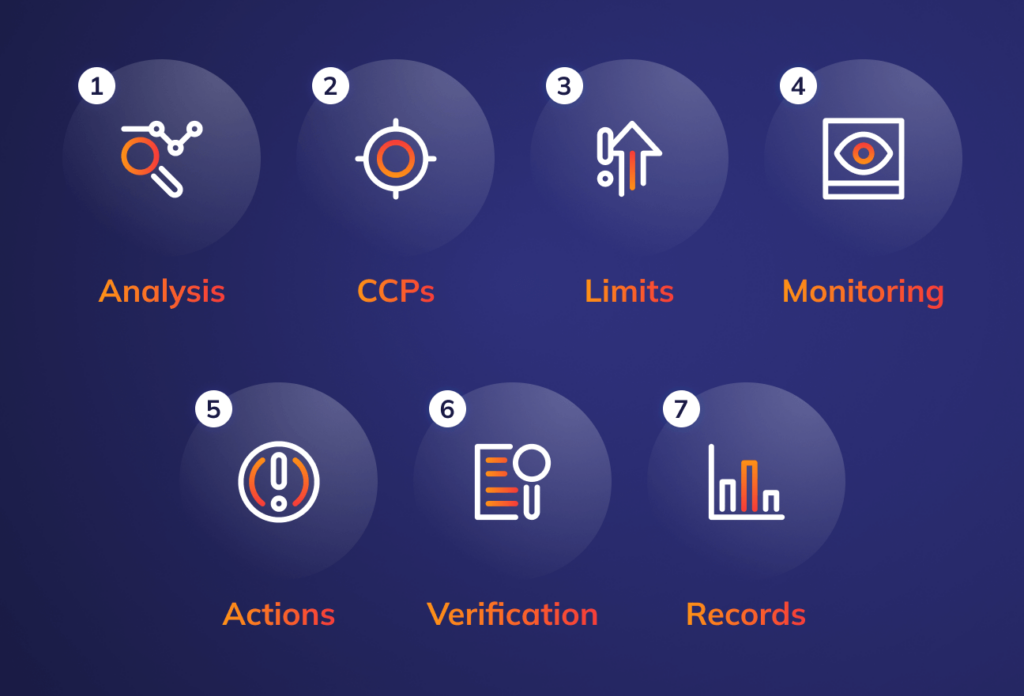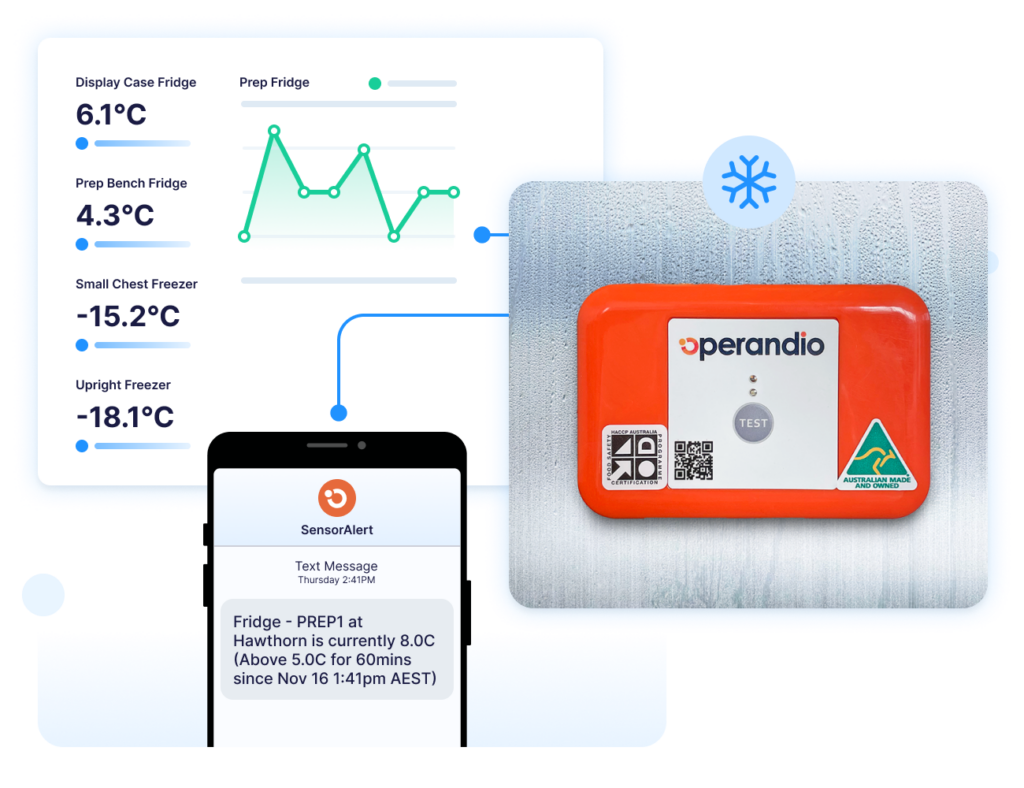A guide to making a HACCP plan
Having processes in place to protect patrons’ health is a top priority. But how do you identify potential hazards? Enter the Hazard Analysis and Critical Control Points (HACCP) plan. Explore why a HACCP system can be a valuable asset for your venue’s food safety and customer satisfaction.
What is HACCP?
If you’re unfamiliar with the specifics of a HACCP plan, don’t worry. We can explain. A HACCP plan is an organized approach, like a food safety checklist, that helps identify, evaluate, and control hazards that can cause food safety issues. It aims to prevent, eliminate, or reduce risk to acceptable levels.
HACCP was developed in the 1960s by the Pillsbury Company, the National Aeronautics and Space Administration (NASA), and the U.S. Army Laboratories. They were looking for a way to guarantee food safety for astronauts on space missions. They wanted to prevent food-borne illnesses from occurring in unideal locations.
In other words, they wanted to prevent a “one small step for man, one giant leap to the restroom” scenario. Needless to say, the system proved to be a hit amongst those involved. It was such a success that other industries took note, with the food industry and regulatory agencies worldwide taking a shine to it.
In hospitality, HACCP plans can help guarantee a venue’s food is safe for consumption. It can be prepared for a restaurant kitchen, served in a hotel buffet, or delivered by a catering service. This precautionary approach identifies potential hazards and implements control measures to minimize or eliminate them.

A HACCP plan example
1. Conduct a hazard analysis
Your first step involves identifying and evaluating potential hazards associated with food production. Hazards can be:
- biological (e.g., bacteria, viruses)
- chemical (e.g., pesticides, cleaning agents), or
- physical (e.g., glass, metal).
A thorough hazard analysis helps determine which risks related to food production are significant and must be addressed through the HACCP plan.
2. Identify Critical Control Points (CCPs)
CCPs are specific points in the food production process where control measures can be applied to prevent, eliminate, or reduce hazards to acceptable levels. These points are crucial for ensuring food safety. This step involves classifying cooking, cooling, and storage temperatures and procedures for preventing cross-contamination – like kitchen equipment sanitation.
3. Establish critical limits
Don’t be alarmed; this isn’t the tagline of a 90s action film. Instead, critical limits are the maximum or minimum values that must be met at each. These limits are based on:
- regulatory requirements
- industry standards, and
- scientific evidence.
For example, the critical limit for cooking poultry is a minimum internal temperature of 165°F. Every poultry-based dish must meet this temperature every time to guarantee safe consumption.
4. Monitor CCPs
Very much a carry-over from the previous steps, this involves regularly checking and recording the CCP to make sure the critical limits are being met. This can be done through:
- visual observation
- temperature measurements, and
- testing.
Monitoring the CCPs helps identify deviations from critical limits whether it’s a cooking point or a walk in cooler temperature and safeguards your control measures are effective.

5. Establish corrective actions
The reality is things will go wrong, and systems can falter. Here is where you can help lessen these faults. Corrective actions are steps taken when a deviation from a critical limit occurs. These are in place to prevent unsafe food from reaching patrons. Corrective actions may include:
- re-cooking
- discarding the problematic food, or
- adjusting the process to bring it back into control.
6. Verify the HACCP system
You need to make sure your HACCP plan is working as intended. This can be done through internal and external audits, reviews, and inspections. Verification aides the HACCP plan to effectively controls hazards and maintains food safety. The last thing you want is to have an ineffective system in place.
7. Record-keeping and documentation
Record-keeping and documentation are the crucial final steps for maintaining a HACCP plan. Documentation provides evidence that the HACCP plan is being implemented and maintained, which could be helpful during a regulatory audit or inspection. This includes keeping records of everything mentioned above and employee training.
Record-keeping and documentation can be challenging, so we’ve developed digital-based checklists to simplify the process. They’re much more efficient than grubby paper checklists.

The benefits of implementing a HACCP plan
Improved food safety and reduced risk of foodborne illnesses
Implementing HACCP helps reduce the risk of foodborne illnesses. By establishing CCPs and critical limits and monitoring them regularly, HACCP guarantees your food is safe for consumption. It’s a handy tool to add to your overall food safety checklist.
Compliance with regulatory requirements
Depending on your location, the local authority may require you to have an HACCP plan. HACCP is a part of a venue’s compliance process, thus reducing the risk of fines, penalties, and legal issues. Considering it is, after all, a recognized and accepted food safety management system, it could become mandatory across the country in a matter of years.
Enhanced reputation and customer trust
Within hospitality, word-of-mouth and reputation amongst patrons is vital. Having a HACCP plan in place shows a wholehearted dedication to preserving food safety for customers. This can lead to a steady supply of regulars – the backbone of a successful venue.
Cost savings
As the old saying goes, waste not, want not. Through waste reduction and improved efficiency, HACCP helps businesses find and fix problems in the food production process. It also reduces the risk of foodborne illnesses, which avoids the costs of recalls, lawsuits, and a bad reputation. Over time, the effort you put into developing a HACCP system can pay for itself.
Streamline employing a HACCP in your business
If you run a business, you probably wish you had more hours in the day. So, regularly maintaining what’s necessary for an effective HACCP system can be difficult over time. Operandio offers digital-based checklists, documentation tools and HACCP software that simplify the process of record-keeping and documentation. All of these can help you implement your HACCP system effectively, providing peace of mind for you and your customers. Book your free demo right now.


